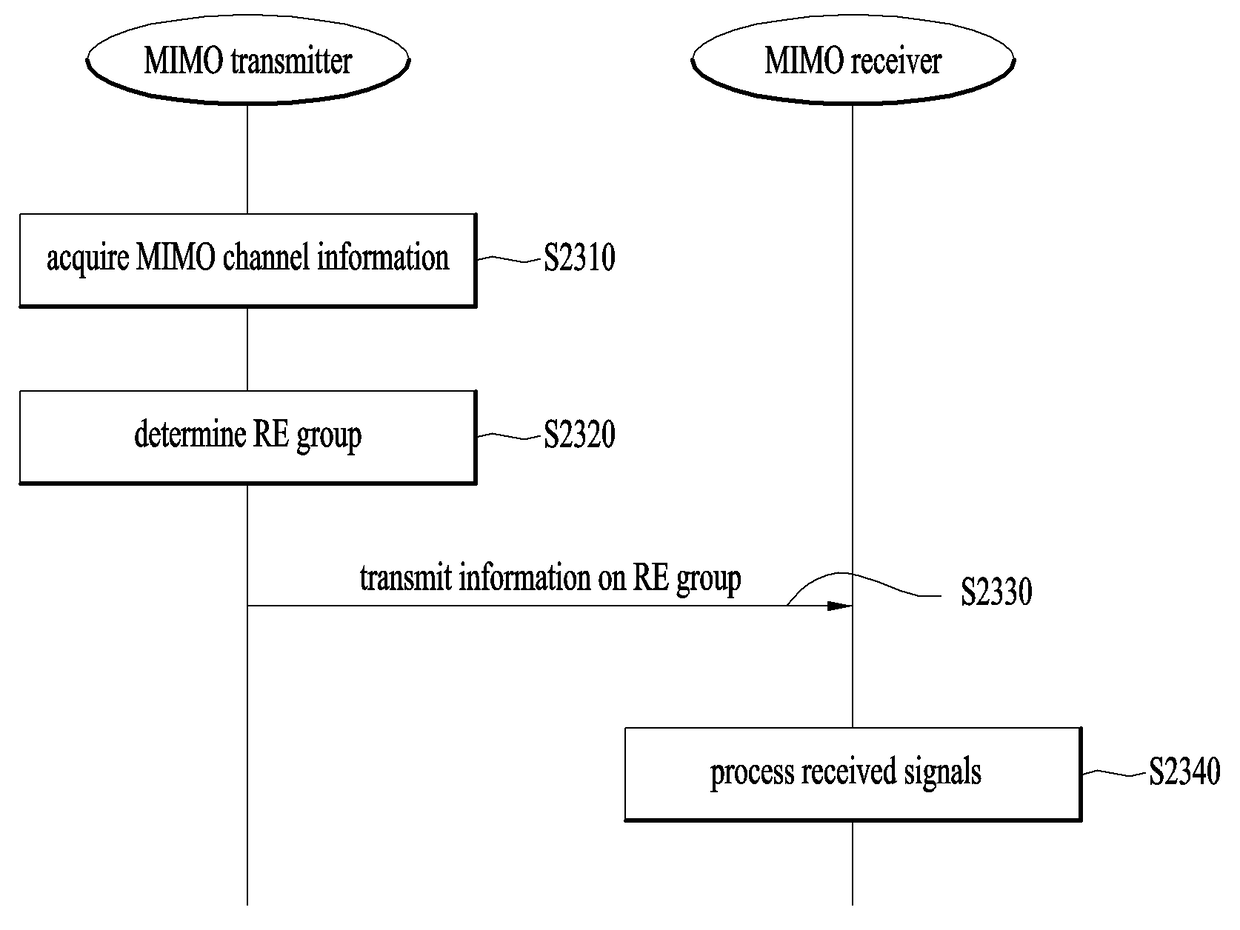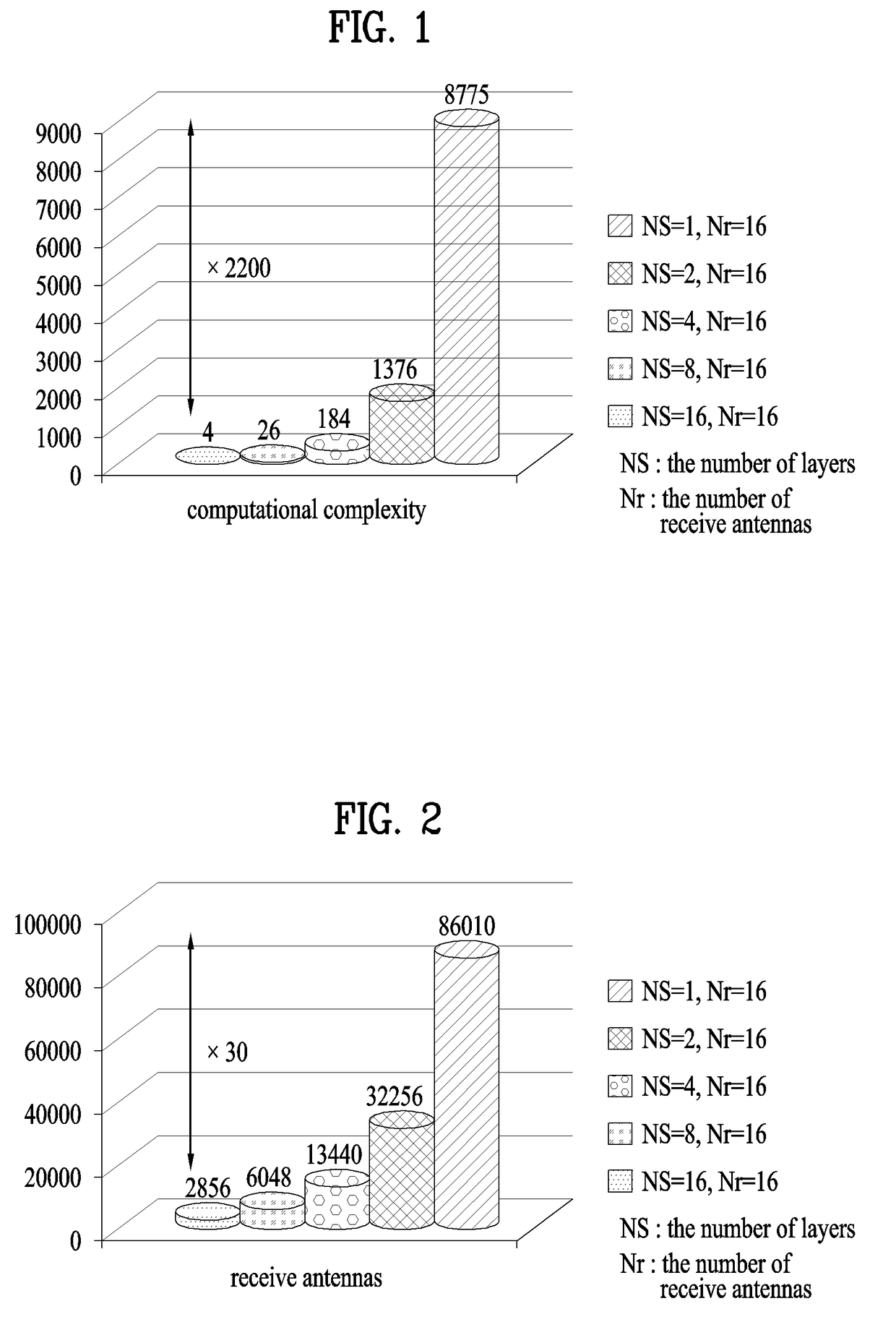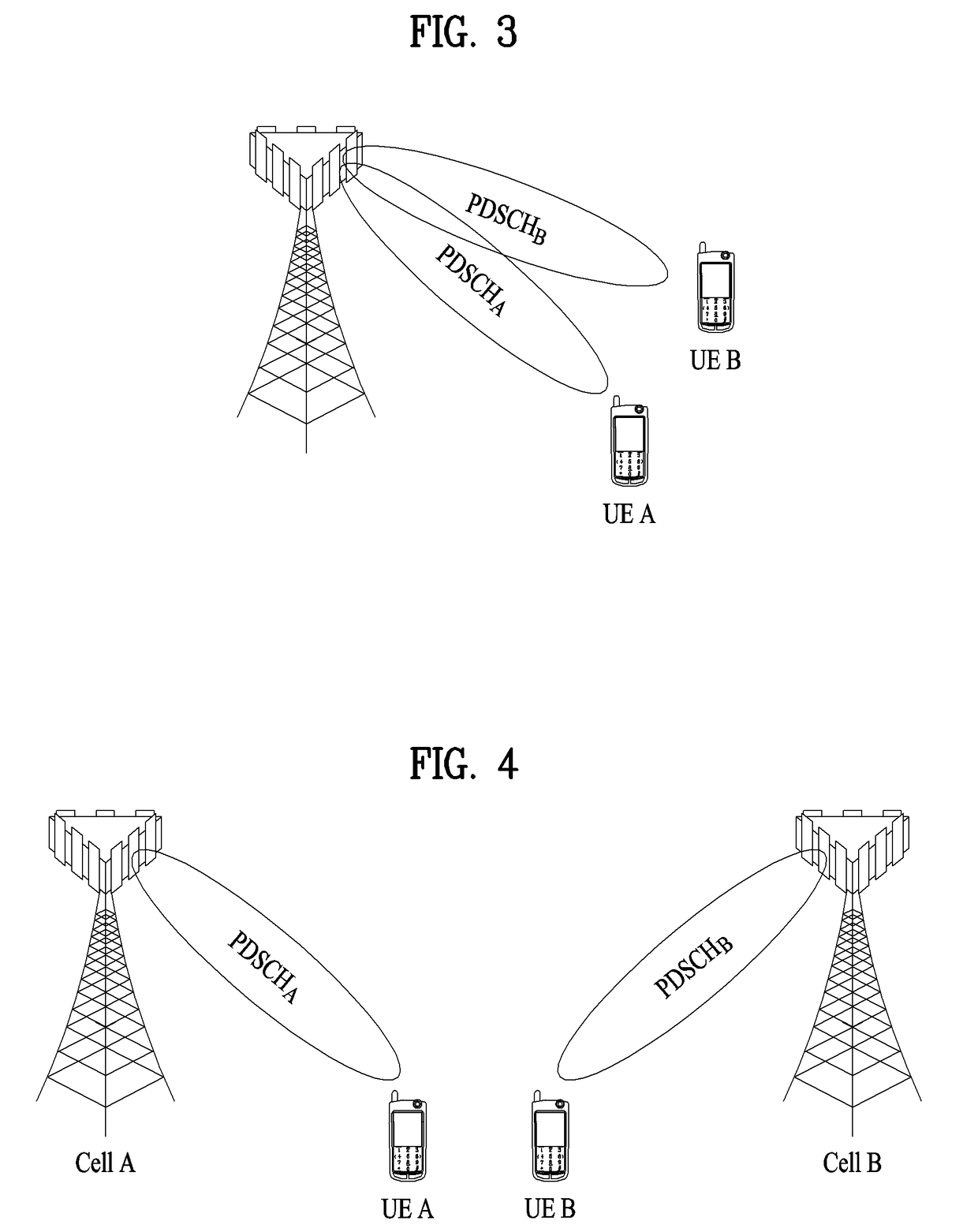Method by which MIMO receiver processes reception signal by aligning plurality of layers by re group unit
a technology of re group unit and mimo receiver, which is applied in the direction of spatial transmit diversity, digital transmission, diversity/multi-antenna system, etc., can solve the problems of interference disappearance and performance deterioration, and achieve the effect of reducing the complexity required to process signals received through a plurality of layers, efficient operation of receivers, and efficient processing of desired signals
- Summary
- Abstract
- Description
- Claims
- Application Information
AI Technical Summary
Benefits of technology
Problems solved by technology
Method used
Image
Examples
first embodiment
[0107] the preprocessing filter may be generated by various algorithms such as a Jacobi method, a Gauss-Siedel method, an SQR preconditioning method and an incomplete Cholesky factorization method.
[0108]First, an arbitrary matrix A1 may be defined based on the MIMO channel of the reference RE (first RE) as shown in Equation 4 below.
A1=G1†G1+R Equation 4
[0109]Since the matrix A1 is a positive definite matrix and is symmetric, Equation 4 may be factorized as shown in Equation 5 below.
A1=L1+D1+L1H Equation 5
[0110]In Equation 5, L1 denotes a lower triangular matrix and D1 denotes a diagonal matrix. In Equation 5, the preprocessing filter V1 according to three methods among the above-described various methods may be defined.
[0111]Jacob method: V1=D1−1
[0112]Gauss-Siedel method: V1=(L1+D1)−1
[0113]SQR preconditioning method: V1=w(L1+wD1)−1 (w is an arbitrary constant)
[0114]Among the above-described methods, the Gauss-Siedel method and the SQR preconditioning method may explicitly expres...
third embodiment
[0124]Subsequently, generating a preprocessing filter will be described with reference to FIG. 11. FIG. 11 is a diagram showing an example of generating a preprocessing filter at a MIMO receiver in relation to the present invention.
[0125]In the third embodiment, Z1 having a small difference from G1G1\ of the first embodiment is found and the method described in the second embodiment is used. For example, if the MIMO channel matrix G1 is approximated to a matrix {tilde over (G)}1 having shapes 1110, 1120 and 1130 shown in FIG. 11, it is possible to significantly reduce computational complexity of A1. In FIG. 11, a black element indicates a non-zero value and a white element indicates a zero value. That is, the value of each element of the channel matrix is compared with a predetermined threshold to approximate the value of the element less than the threshold to 0. At this time, the rank of the approximated {tilde over (G)}1 should be equal to G1.
[0126]The three embodiments of computi...
second embodiment
[0248]Third, the MIMO transmitter may periodically or aperiodically inform the MIMO receiver of information on the RE group. The MIMO transmitter of the above-described second embodiment transmits information on the configuration of a new RE group expressed by a relation with the configuration (that is, set) of the previously selected RE group to the MIMO transmitter. In the present embodiment, the MIMO transmitter directly informs the MIMO receiver of information on the configuration of the RE group periodically or aperiodically. Therefore, the MIMO receiver may form the RE group according to the embodiment described in Chapter 3 in a period in which the information on the RE group is not received.
[0249]For aperiodic transmission, the MIMO transmitter may transmit the information on the RE group to the MIMO receiver in the following cases: for example, if the MIMO transmitter first transmits data to the MIMO receiver, if the number of layers or ranks is changed, if a serviced carri...
PUM
 Login to View More
Login to View More Abstract
Description
Claims
Application Information
 Login to View More
Login to View More - R&D
- Intellectual Property
- Life Sciences
- Materials
- Tech Scout
- Unparalleled Data Quality
- Higher Quality Content
- 60% Fewer Hallucinations
Browse by: Latest US Patents, China's latest patents, Technical Efficacy Thesaurus, Application Domain, Technology Topic, Popular Technical Reports.
© 2025 PatSnap. All rights reserved.Legal|Privacy policy|Modern Slavery Act Transparency Statement|Sitemap|About US| Contact US: help@patsnap.com



